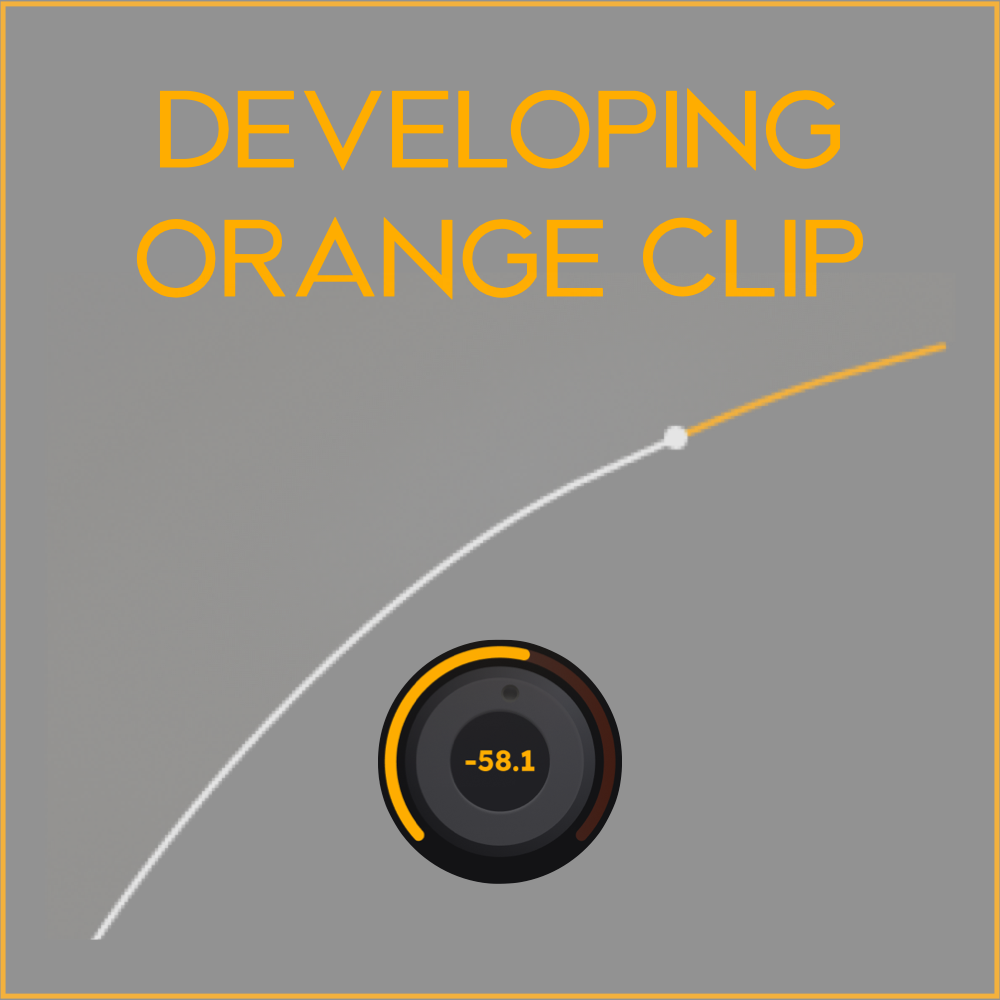05) What is a ORANGE Processing?
In the last post, I spoke about how wave shapers work, and today we will get into ORANGE processing. Surprise, it is a wave shaper.
The ORANGE setting determines the size and shape of the wave shaping applied to the track. You can consider it a threshold on a compressor. It is the level at which the signal starts to wave shape or compress. It is the length of the wave shaping down from the ceiling setting. The ORANGE setting goes from 0.0 dBFS (hard clipping) to -51.8 dBFS (soft clipping / shaping). The ORANGE dB value is where the wave shaping begins and the ceiling setting is where the curve ends.
If you set ORANGE to 0.0dB (clockwise) the transfer function is linear (a strait line) up until the clip ceiling setting. With this setting the processor is not wave shaping, it is hard clipping into a brick wall at the clip ceiling setting. This tends to sound brighter, more aggressive and sometimes crunchy.
If you set ORANGE to -51.8 (counter-clockwise), the input signal starts to wave shape at -51.8 dB below the ceiling setting. This is a soft knee curve that smooths out and takes the bite out of the signal. If there is a clicky or pointy kick drum in the mix, it will push that pointy sound further into the track and make things sound more round.
The default setting of -4.4 dB starts to wave shape 4.4 dB below the clip ceiling setting. This medium knee curve works in many situations and has a pleasing tone that smooths the midrange and subtly expands the lows. If you want it to sound softer and deeper, turn ORANGE counterclockwise. If you want it harder or firmer, turn clockwise.
You can think of the orange as a tone knob, but in reality, it is changing the tone by drastically affecting the dynamics of the track. If you add in some clipping and you are now are intermixing tone and distortion.
That should be enough to give you an idea of the power of Orange Clip. In the next post we will talk a bit about the ceiling, trims and metering.
Be well,
Ryan Schwabe
Grammy-nominated and multi-platinum mixing & mastering engineer
Founder of Schwabe Digital
Designer of Gold Clip & Orange Clip
p.s. If you haven't already, you can buy or rent-to-own ORANGE CLIP right here.














